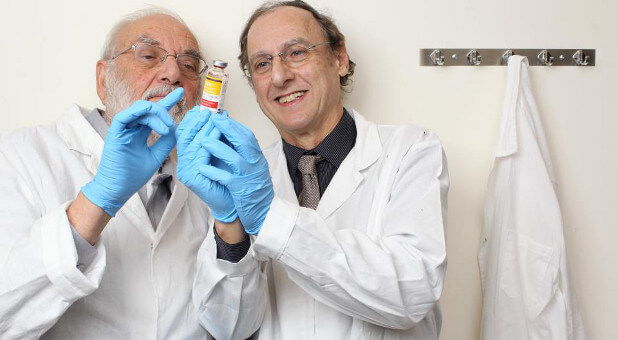The festival of Hanukkah, which ended this year on Sunday night, Dec 16, has provided an appropriate opportunity to illuminate the life-saving achievements of the Jewish State.
Here are only a few of many recent heartwarming highlights: Curing cancer is one of the main life-saving goals of Israeli researchers and bio-techs. Israeli biologist Ido Bachalet is part of the team that designed a microscopic “truck” of DNA nano-robots to carry anti-bodies directly to tumors. The truck releases its payload when it encounters the biological key of the tumor.
A further weapon in the fight against cancer is focused ultrasound. Dr Yoav Medan explains in a Technion video how it is used to treat tumors in the brain. In latest research, Hebrew University of Jerusalem scientists have discovered how the malaria infection works: The deadly Plasmodium falciparum strain only reveals its 60 destructive genes to the body’s immune system one at a time. Uncovering its mask should lead to new treatments.
Meanwhile at Israel’s Weizmann Institute, researchers have shed new light on how bacteria develop resistance by removing antibiotics at the cellular level. A number of positive news stories emerged from the recent Gaza conflict: A rare sympathetic CNN report highlighted that Israeli hospitals treat all patients equally. CNN featured Tel Aviv’s Sheba Medical Center, which is treating Israeli and Gazan children alike.
Then we heard that doctors at Rehovot’s Kaplan Medical Center saved the arm of Boris Chomeh, which was severed by the Grad missile attack by Gaza terrorists on Kiryat Malachi. Finally, doctors at Soroka Hospital in Beer Sheva saved the sight of Sergeant Shimon Alankri who was seriously wounded when Gaza terrorists fired an anti-tank missile at his jeep. Last week Shimon was able to light Hanukkah candles at the hospital.
A cleaner environment will certainly help people to live longer: Scientists at Israel’s NewCO2Fuels are testing a method for turning brown coal into an environmentally friendly fuel source. The process uses highly focused solar rays to convert carbon dioxide produced in the burning of the coal into more fuel and oxygen.














































